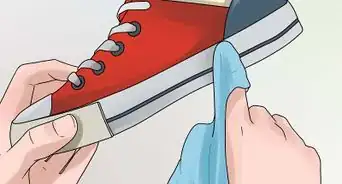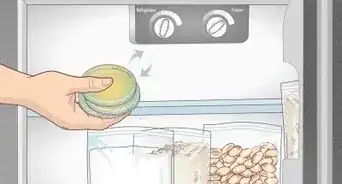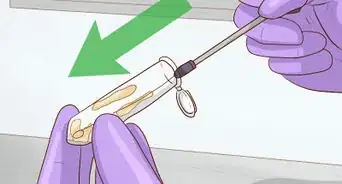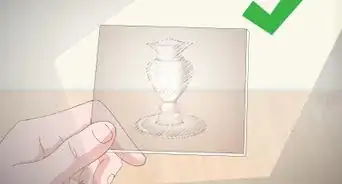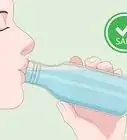This article was co-authored by wikiHow Staff. Our trained team of editors and researchers validate articles for accuracy and comprehensiveness. wikiHow's Content Management Team carefully monitors the work from our editorial staff to ensure that each article is backed by trusted research and meets our high quality standards.
This article has been viewed 10,796 times.
Learn more...
Limewater is the name you’re most likely to hear for a water solution containing calcium hydroxide. Limewater neutralizes acids, so you might find yourself using it to treat water and soils that have high acidity. You might also work with limewater in a lab setting as part of your studies or a job. Either way, you may be wondering what to do with leftover limewater waste. Since limewater is not considered a hazardous waste, disposal isn’t too complicated. However, it can cause irritation if you get it on your skin or in your eyes and nausea if inhaled or swallowed, so make sure to protect yourself properly when handling limewater in order to dispose of it safely.
Steps
Taking Safety Precautions
-
1Put on protective eyewear and rubber gloves before handling limewater. Wear either safety glasses or goggles to protect your eyes from accidental splashes. Use rubber gloves to avoid getting limewater on your hands.[1]
- Limewater can irritate your skin and eyes and cause redness if it comes into contact with them.
- If you do get any limewater on your skin, rinse and wash it off thoroughly with soap and water.
- If you get limewater in your eyes, flush them out with water for 15 minutes.
- Get medical attention if irritation persists after washing limewater off your skin or out of your eyes.
-
2Work in a well-ventilated area when disposing of limewater. Open up windows and doors to let air in and ventilate the space you will be working in. Turn on any fans or exhaust systems that you have available for additional ventilation.[2]
- Breathing in excessive amounts of limewater fumes can cause irritation of your throat and lungs and even nausea.
- If you’re dealing with a limewater spill, make sure to ventilate the area as much as possible right away.
- If you accidentally inhale limewater fumes, stop and go outside to breathe some fresh air. Seek medical attention if you experience difficulty breathing.
Advertisement -
3Avoid eating, drinking, and smoking when you’re handling limewater. This is to avoid accidental ingestion of limewater. Keep limewater away from all types of food, beverages, and anything else you put in your mouth, including cigarettes.[3]
- Ingesting limewater can cause irritation and nausea.
- If you start to feel sick while you’re handling limewater, you might have accidentally ingested some. Seek medical attention.
-
4Wash your hands thoroughly after dealing with limewater. Remove your protective gear, including gloves, as soon as you’re done disposing of limewater. Scrub your hands with soap and water, then rinse them off.[4]
- This will get rid of any traces of limewater to avoid potential irritation and redness.
Getting Rid of Limewater
-
1Flush liquid limewater solutions down a sink with lots of water. Turn on the tap to high pressure, then pour the limewater directly down the drain. Leave the water running for 1-2 minutes to ensure all the solution gets flushed down through the pipes.[5]
- Limewater is not a hazardous waste, so you don’t have to take it to a hazardous waste disposal facility.
-
2Soak up limewater spills with a non-combustible absorbent material like sand. Use a non-combustible material like sand, cat litter, soil, or vermiculite. Spread it out over the spill and let it absorb all the limewater.[6]
- Limewater itself is not flammable, but it can release toxic fumes when it comes into contact with fire, which is why it’s best to use a non-combustible absorbent.
- If you don’t have a non-flammable absorbent material handy, you could soak up the spill with a towel or rag, then rinse it out thoroughly and squeeze it out down the drain. Launder the towel or rag after rinsing the limewater out.
-
3Dispose of solid limewater solutions with household trash. Solid limewater solutions include soils that have been treated with limewater or spills that have been soaked up with absorbent materials. Put these types of materials soaked with limewater into a trash bag or other container and throw them out with the regular trash.[7]
- Make sure to follow any local guidelines for trash disposal and separation of materials.
-
4Rinse off surfaces that came into contact with limewater thoroughly. Use regular water to spray down or wipe off floors, counters, and any other surfaces near where you handled the limewater. This will get rid of any residual traces of the limewater after you dispose of it.[8]
- For example, if you were handling the limewater in a garage or a lab and there is a drain in the floor, you can spray down the floor with a hose.
- For floors where there is no drain, you can just mop them.
- You can use a wet cloth or rag to wipe down things like counters and tables.
Warnings
Things You’ll Need
Taking Safety Precautions
- Protective eyewear
- Soap
- Water
Getting Rid of Limewater
- Sink
- Water
- Trash bag or container
- Non-combustible absorbent
- Cloth or rag
- Hose
- Mop
References
- ↑ https://www.boconline.co.uk/en/images/lime_slurry_tcm410-55830.pdf
- ↑ https://www.nwmissouri.edu/naturalsciences/sds/l/Limewater.pdf
- ↑ http://www.labchem.com/tools/msds/msds/LC16160.pdf
- ↑ http://www.labchem.com/tools/msds/msds/LC16160.pdf
- ↑ https://projects.ncsu.edu/project/chemistrydemos/Equilibrium/Dry%20Ice%20and%20Limewater.pdf
- ↑ https://www.boconline.co.uk/en/images/lime_slurry_tcm410-55830.pdf
- ↑ https://melscience.com/US-en/experiments/limewater
- ↑ https://www.nwmissouri.edu/naturalsciences/sds/l/Limewater.pdf
- ↑ http://www.labchem.com/tools/msds/msds/LC16160.pdf





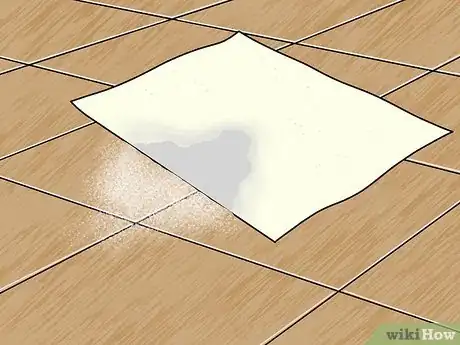


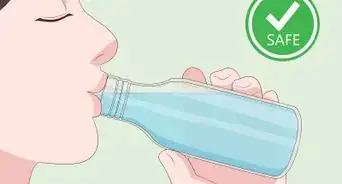
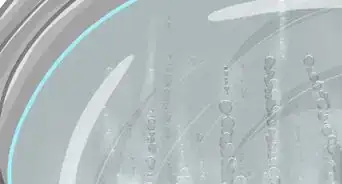

-Electric-Shock-Step-9.webp)

